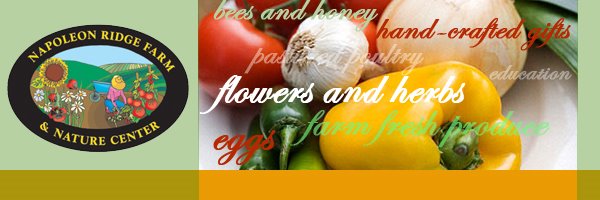Black from Tula: (above) A Russian heirloom described by a grower as “the ugliest, most delicious tomato I’ve ever grown.” Rich full flavor, great for slicing and canning. Good yields of 3-4", slightly flattened fruits on 3-4' plants. This is one I planted and harvested the seeds from myself for this year.
The rest of my heirloom seeds came from Local Harvest - my hero for the farmer - and next year maybe I can get some of my seeds out there. (http://www.localharvest.org/)
From Happy Cat Organics:
Amish Salad: (above) A beautiful cherry tomato that is an Amish Heirloom that has a fantastic reddish pink color and about 1.5 inches that grow in clusters of 7-9. Very sweet flavor that has a hint of earthiness.
Speckled Roman: (below) An open pollinated cross of Antique Roman and Banana legs. This one got lots of attention, everywhere I went people asked us about this tomato. It is really nice to look at and a delight to eat, better used as a sauce tomato.
Old German: Some fruits reach 2 pounds. Yellow over the shoulders and Red on the blossom end, the color meet in the middle like a tied dye shirt, the slices look like images sent back from the Hubble telescope. Wonderful sweet flavor, this old mennonite heirloom is indeterminate and takes 80 days from transplant.
From Sharon's Natural Gardens:Cherokee Purple: Heirloom with outstanding flavor and almost blemish free. A mid- to large tomato with a purple cast and green shoulders. Very productive and long lived.
Pale Yellow Egg Tomato (I'm going to call it Henny Penny):
A rare find, perhaps an heirloom from France. I received it in a yellow tomato collection from a biodynamic growing circle and have grown it here every year since (5 years). It is a market and CSA favorite. It is the size and shape of a banty egg, and very productive.
From Garden Medicinals and Culinaries:
Belyj Naliv: An ethnic Russian variety brought to the U.S. in 1995 when we donated seed for food crops in exchange for starter seed of ethnic varieties. This one comes from a region 60 km south of Moscow.] As is characteristic of many ethnic varieties, the fruits are somewhat variable in size and flavor. The short vines (3-1/2 feet) are very productive and are well-suited for ground culture, staking, or growing in small cages. Fruits average 1.5 x 2" and are resistant to cracking. 'Belyj Naliv' was one of the better early-season Russian varieties that we trialed.
More soon on tomatoes and how to harvest your own seeds.
* Local grocer, Remke has agreed to buy our heirloom tomotoes, so in addition to the farm stand and farm market, you will be able to find them there.












